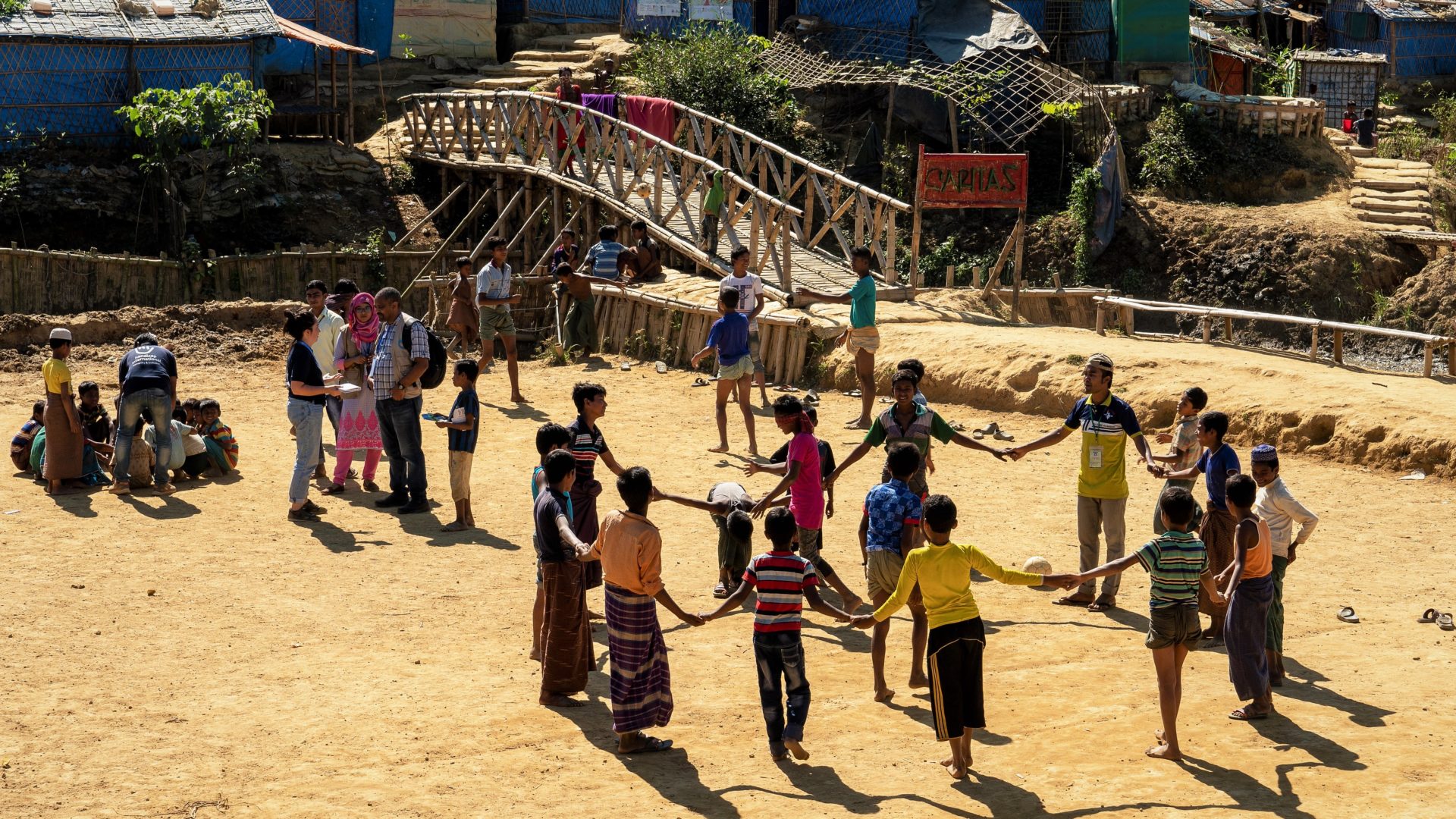Field Research in Bangladesh on Inclusive Humanitarian Action
Category
Applied Accompanying Research
© Abir Abdullah/HI
Our project “Phase 2 – Leave no one behind!” promotes the inclusion of persons with disabilities in humanitarian action. Using the global Inter-Agency Standing Committee (IASC) Guidance on the Inclusion of Persons with Disabilities in Humanitarian Action, we are working to help humanitarian actors better understand the human rights-based approach to disability in their work.
To better understand the challenges of implementing inclusive humanitarian assistance, and to document best practices, part of the project is dedicated to researching inclusive humanitarian assistance.
Our first case study focuses on disability mainstreaming in Cox’s Bazar, Bangladesh, where more than 854,000 Rohingya refugees from Myanmar have found refuge. Here is a brief overview of key findings:
- Humanitarian practice still does not adequately protect people with disabilities.
- Strategic partnerships and NGO consortia can make an important contribution to inclusive humanitarian response.
- However, they need reliable long-term funding.
- Humanitarian actors need to systematically build their capacity, including especially at their headquarters, to develop and implement long-term strategies for inclusion.
- National and local actors in Cox’s Bazar are indispensable for successful inclusion. They need to build their capacities on disability mainstreaming and gradually assume a leading role in the response.
- The work of disability-focused NGOs in providing targeted assistance to persons with disabilities and in building the capacity of various humanitarian partner organizations to include persons with disabilities remains key to protecting their rights and enabling their participation in the humanitarian response. One important initiative is the Age and Disability Working Group, which is instrumental in closing important data gaps and ensuring systematic inclusion of persons with disabilities in the humanitarian cluster system.
- There is a critical need for more applied research and longitudinal studies that examine the implementation of global guidelines and their impact in other crisis contexts.
“We always think about those who use a wheelchair and most of the time the response is: ‘Let’s build a ramp!’ But a ramp will not be helpful for people with different types of disabilities.”
Interview, Representative of an INGO
The report can be found accessible to people with various impairments in the following formats here:
A brief summary with key findings and a brief overview of data collection and analysis is available here:
The project is funded by the German Federal Foreign Office (AA) and carried out together with the Christoffel Blindenmission Christian Blind Mission e.V. (CBM) and the Institute for International Law of Peace and Humanitarian Law (IFHV) at the Ruhr-University Bochum.